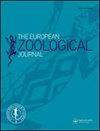食物网中的微塑料污染:加尔达湖畔talitrid片脚类Cryptorchestia garbinii摄入的观察
IF 1.6
4区 生物学
Q2 ZOOLOGY
引用次数: 1
摘要
摘要环境中的塑料污染已成为全世界广泛讨论的问题。近几十年来,所有环境的污染越来越明显,尤其是水的污染令人高度担忧。不同动物物种在自然条件下的摄入也已得到证实。其中包括生活在内部水道和湖泊海岸线上的Talitrid两栖纲Cryptorchestia garbinii。作为碎屑动物,它非常容易接触到可以摄入的微塑料,可能会误以为它们是食物。为了强调微塑料的摄入以及该物种作为食物网入口的作用,我们分析了来自加尔达湖畔4个地点的80个样本,加尔达湖是意大利首批研究此类污染的湖泊之一。通过尼罗红染色法对摄入的微塑料进行观察和定量。我们能够验证所有分析的样本中是否存在摄入的微塑料,因此也能够验证食品网中是否存在。该物种可以作为塑料暴露的有价值的自然模型。微塑料哨点物种可以用作环境暴露的替代品和生态系统监测工具,以量化和评估微塑料污染的影响。本文章由计算机程序翻译,如有差异,请以英文原文为准。
Microplastic pollution in the food web: observation of ingestion by the talitrid amphipod Cryptorchestia garbinii on the shores of Lake Garda
Abstract Plastic pollution in the environment has become a much-discussed issue worldwide. In recent decades, the contamination of all environments has become increasingly evident, in particular, that of water is highly concerning. Ingestion by different animal species under natural conditions has also been demonstrated. Among these is the Talitrid Amphipod Cryptorchestia garbinii, which lives on the banks of the internal waterways and lakes’ shorelines. As detritivores species, it is very exposed to microplastics that can be ingested, probably mistaking them for food. Aiming to highlight the microplastic ingestion and the role of this species as an entry point for the food web, we analyzed 80 specimens from 4 sites along the shores of Garda Lake, one of the first lakes in Italy to be studied for this type of contamination. The microplastics ingested were observed and quantified through the Nile Red staining method. We were able to verify the presence of ingested microplastics in all the samples analyzed and, therefore, in the food web. This species could serve as valuable natural models of plastic exposure. Microplastic sentinel species can be used as a proxy for environmental exposure and ecosystem monitoring tools to quantify and assess the impacts of microplastic contamination.
求助全文
通过发布文献求助,成功后即可免费获取论文全文。
去求助
来源期刊

European Zoological Journal
Agricultural and Biological Sciences-Animal Science and Zoology
CiteScore
3.10
自引率
5.60%
发文量
80
审稿时长
30 weeks
期刊介绍:
The European Zoological Journal (previously Italian Journal of Zoology) is an open access journal devoted to the study of all aspects of basic, comparative and applied protozoan and animal biology at molecular, cellular, tissue, organ, organismal, population, and community-ecosystem level. Papers covering multiple levels of organization and integrative approaches to study animal form, function, development, ecology, evolution and systematics are welcome. First established in 1930 under the name of Il Bollettino di Zoologia, the journal now has an international focus, reflected through its global editorial board, and wide author and readership.
 求助内容:
求助内容: 应助结果提醒方式:
应助结果提醒方式:


